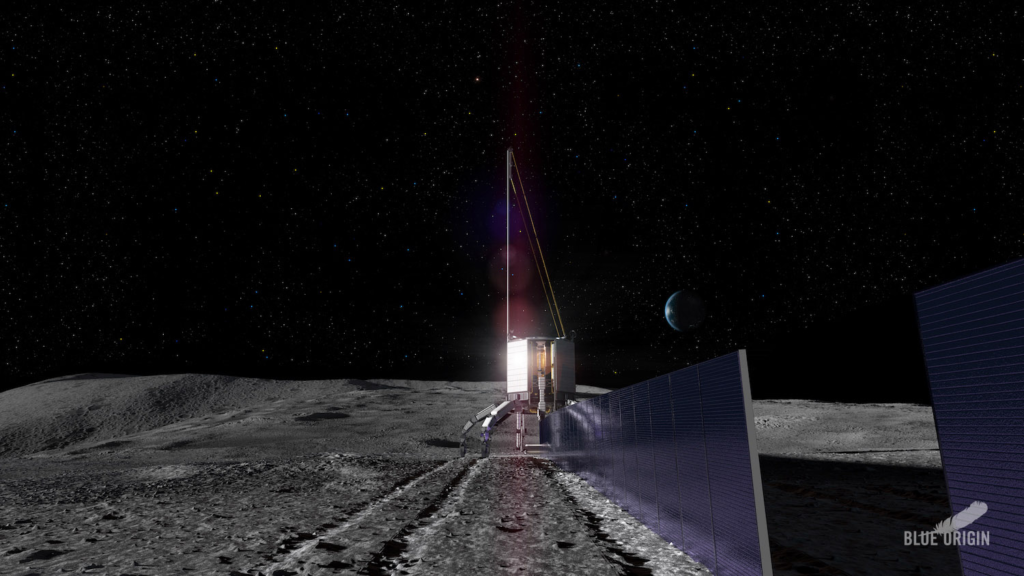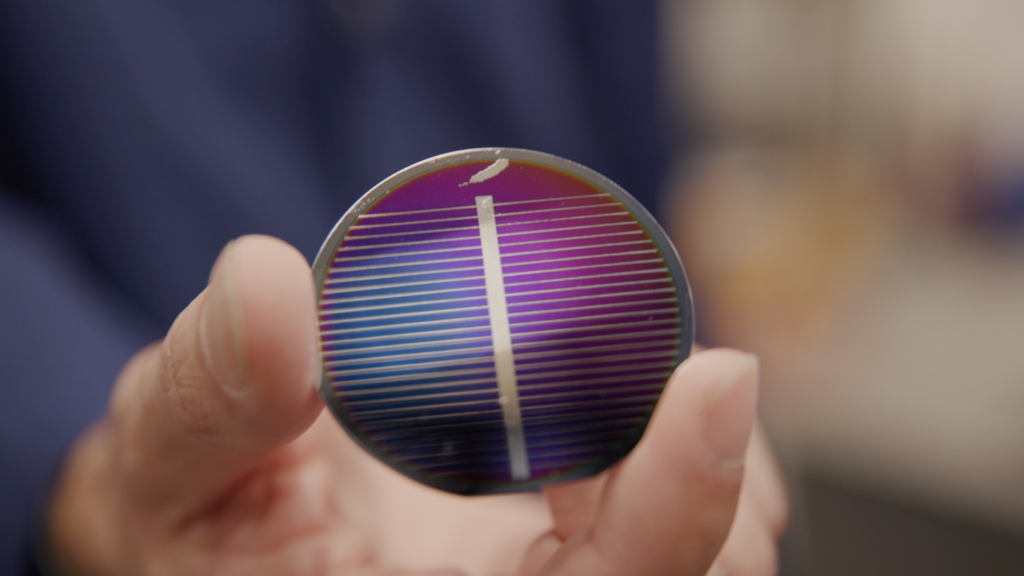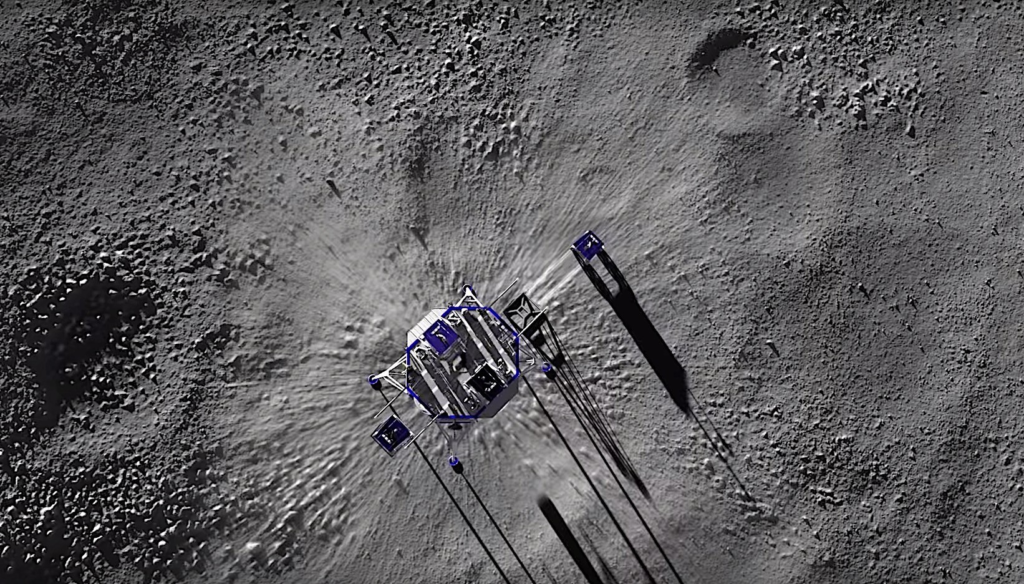
How Blue Origin Plans To Create Unlimited Solar Power
Earlier this year in February, we first learned about a unique project Blue Origin was working on. In reality the company has been working on this technology for years since 2021 but only recently started making decent developments. The project named Blue Alchemist revolves around manufacturing working solar cells from lunar regolith and generating power.
Earlier today, Blue Origin was awarded a NASA partnership worth $35 million in order to further pursue this project. With NASA planning to return to the Moon in the coming years, and even Blue Origin working on a lunar lander, this technology could play an important future role. This being said, the idea is far from complete and the company still has a lot of work left.
According to NASA, a technology like Blue Alchemist is considered at a Tipping Point if the agency’s investment can help grow the innovation into a viable commercial solution. Here I will go more in-depth into how this tech works, the recent award, when Blue Origin expects to complete it, and more.
New Contract

Earlier this morning we got a new update on the project when Blue Origin tweeted saying, “Blue Alchemist has been awarded a @NASA Tipping Point partnership to produce scalable solar power systems from lunar dust. We’re developing this technology to access and utilize space resources that enable sustainable exploration for the benefit of Earth.”
Blue Alchemist is a proposed end-to-end, scalable, autonomous, and commercial solution that produces solar cells from lunar regolith, which is the dust and crushed rock abundant on the surface of the Moon. Based on a process called molten regolith electrolysis, the breakthrough would bootstrap unlimited electricity and power transmission cables anywhere on the surface of the Moon. This process also produces oxygen as a useful byproduct for propulsion and life support.
In a statement from Blue Origin regrading the new partnership they pointed out, “Today’s investment will result in a demonstration of autonomous operation in a simulated lunar environment by 2026.” Obviously based on this quote, the technology is quite far away from actual implementation, and there are a few reasons for that. To make long-term presence on the Moon viable, we need abundant electrical power. Blue Origin believes they have pioneered the technology and demonstrated all the steps. Their approach, can scale indefinitely, eliminating power as a constraint anywhere on the Moon.
They start by making regolith simulants that are chemically and mineralogically equivalent to lunar regolith, accounting for representative lunar variability in grain size and bulk chemistry. This ensures their starting material is as realistic as possible, and not just a mixture of lunar-relevant oxides. They have also developed and qualified an efficient, scalable, and contactless process for melting and moving molten regolith that is robust to natural variations in regolith properties on the Moon. Using regolith simulants, the reactor produces iron, silicon, and aluminum through molten regolith electrolysis, in which an electrical current separates those elements from the oxygen to which they are bound. Oxygen for propulsion and life support is a byproduct.
The company’s proprietary transport subsystem moves and separates molten material at temperatures above 1600 degrees Celsius in a controlled and power-efficient manner while withstanding the high-temperature, corrosive environment. Molten regolith electrolysis extracts iron, then silicon, and finally aluminum by passing a current through the molten regolith. The rising oxygen bubbles in one of their reactors show metals and metalloids being separated from oxygen. They are confident that the reactor geometry, metal extraction approach, and materials selection will enable sustained lunar operations.
The entire idea and goal of this project has to do with the idea of living off the land. Even with impressive launch vehicle innovations throughout the space industry, its still is very expensive to launch a single kilogram into orbit and even more so to the Moon. With plans to setup a more permanent human presence, energy will be in very high demand. So much so that alternative options to launching large amounts of traditional power generation infrastructure would be beneficial. All this being said, Blue Origin still has a lot of work left to not only verify that this process works but also figure out a way to actually do it on the Moon. The process is hard enough here on Earth with full labs and equipment everywhere. These challenges are the reason this tech will likely not be ready for years until later in the decade.
Blue Alchemist

So far in tests, Blue Origin’s process purifies silicon to more than 99.999%. This level of purity is required to make efficient solar cells. While typical silicon purification methods on Earth use large amounts of chemicals, their process uses just sunlight and the silicon from the reactor. Specifically, the company’s process fabricates solar cells, including cover glass, using only products from the reactor. These long-lived cells resist degradation caused by radiation on the Moon.
For protection from the harsh lunar environment, solar cells need cover glass; without it, they would only last for days. Blue Origin was quoted saying, “Our technique uses only molten regolith electrolysis byproducts to make cover glass that enables lunar lifetimes exceeding a decade.”
In terms of actual work and developments, Blue Origin put together a team and significant laboratory to focus on this project. The team encompasses all disciplines needed to solve this technical challenge. It includes geologists, geochemists, electrochemists, metallurgists, materials and photovoltaic scientists, fluid dynamicists, mechanical and electrical engineers, roboticists, and instrument, space flight, and systems engineers.
Even the laboratory is purpose-equipped for every step of the end-to-end process of transforming regolith into solar cells and aluminum wire, including quality and longevity testing. In one final quote Blue Origin said, “Although our vision is technically ambitious, our technology is real now. Blue Origin’s goal of producing solar power using only lunar resources is aligned with NASA’s highest priority Moon-to-Mars infrastructure development objective. Learning to live off the land – on the Moon and on Mars – will require extensive collaboration across the ISRU community. We are ready” they said.
Looking at the industry as a whole, solar power generation is the predominant method of power generation on small spacecraft. As of 2021, over 90% of all nanosatellite/SmallSat form factor spacecraft were equipped with solar panels and rechargeable batteries. However, they are by no means perfect, limitations to solar cell use include diminished efficacy in deep-space applications, no generation during eclipse periods, degradation over mission lifetime (due to aging and radiation), high surface area, mass, and cost. To pack more solar cells into the limited volume of certain projects, mechanical deployment mechanisms can be added, which may increase spacecraft design complexity, reliability, as well as risk.
While NASA is excited about what Blue Origin is working on, they aren’t relying on it. Last year, NASA selected three companies to further advance work on deployable solar array systems that could help power the agency’s human and robotic exploration of the Moon under Artemis. Through Artemis missions, NASA will return humans to the Moon and establish a long-term presence near the lunar South Pole. A reliable, sustainable power source is required to support lunar habitats, rovers, and even construction systems for future robotic and crewed missions. To help provide this power, NASA is supporting development of vertical solar arrays that can autonomously deploy up to 32 feet high and retract for relocation if necessary.
“These prototypes will provide promising solutions for reliable power sources on the Moon, which are key to the success of almost anything we do on the surface,” said the director of technology maturation in NASA’s Space Technology Mission Directorate (STMD) at NASA Headquarters in Washington. “This exciting effort plays a critical role that will quite literally help power our Artemis exploration in the uniquely challenging environment of the Moon’s South Pole.”
The agency awarded a total of $19.4 million to three companies to build prototypes and perform environmental testing, with the goal of deploying one of the systems near the Moon’s South Pole near the end of this decade. The designs must remain stable on sloped terrain and be resistant to abrasive lunar dust, all while minimizing both mass and stowed volume to aid in the system’s delivery to the lunar surface.
They pointed out that existing space-rated solar array structures are designed for use in microgravity or for horizontal surface deployment. The vertical orientation and height of these new designs will help prevent loss of power at the lunar poles where the Sun does not rise very far above the horizon. When the Sun is low on the horizon, the Moon’s terrain can block some of its light, keeping it from reaching solar arrays that are low to the ground.
Conclusion
Blue Origin was just awarded $35 million to continue working on its Blue Alchemist project. While ambitious, NASA knows it could be the future of power generation on the Moon and even Mars. We will have to wait and see how it progresses and the impact it has on the space industry.
